- Let me introduce you
- No ultrasound needed (to count the babies)
- So why faint?
- Help!
- Three Generations
- Fame
- Hope & Grace
- Epilogue
- Sources

Have you ever seen this photo? Well I have the story for you:
Let me introduce you
Nora and Arris Poulos lived in New York City, he was a 27 years old veteran having served overseas during WWII. Now they were ready to start their family… and how. On April 22nd 1946, at Lutheran Hospital* in New York City, Dr Carl Strauss delivered 24 yo Nora of triplets, all boys.. and then he caught Arris when he fainted on seeing his sons (but one source claims it was “feigned” shock.)
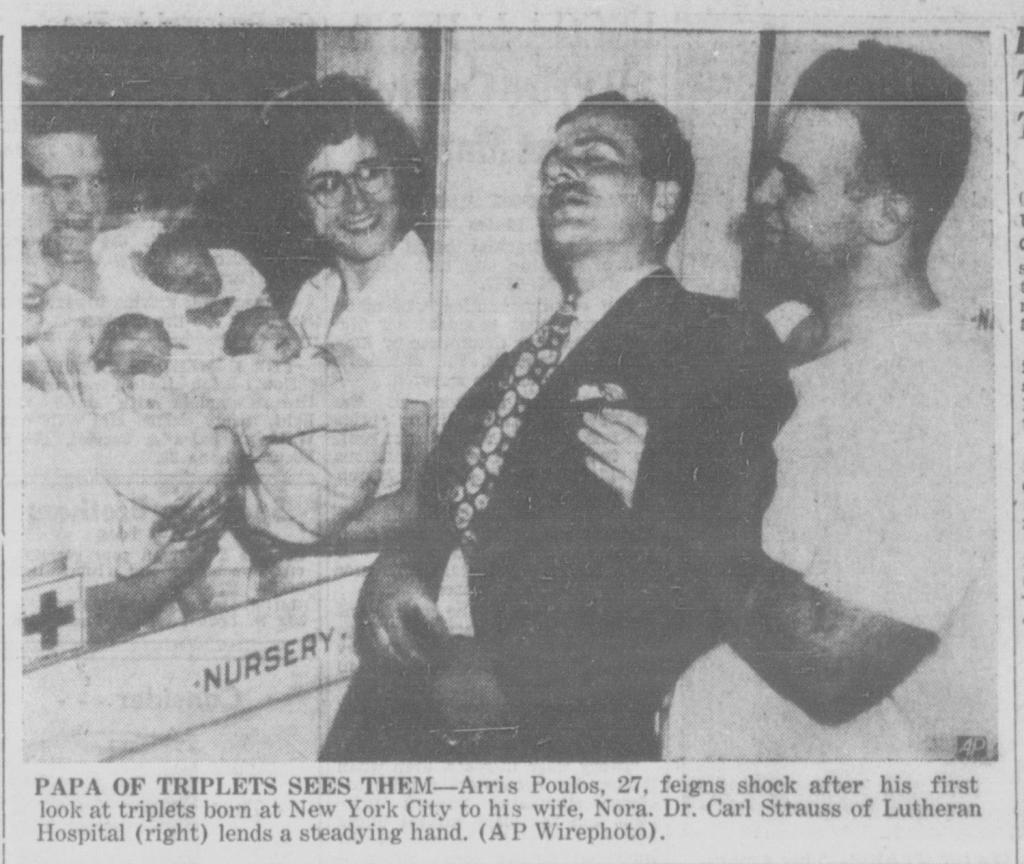
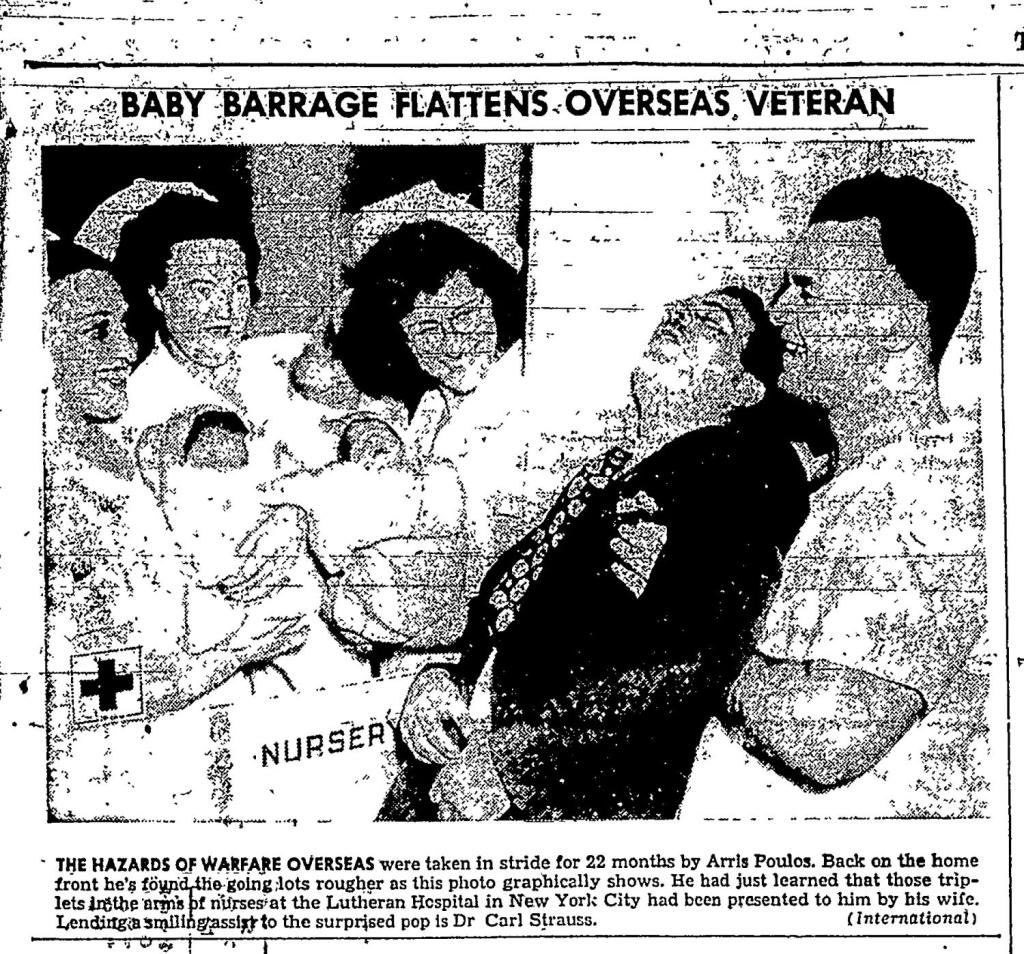


No ultrasound needed (to count the babies)
They were probably aware Nora was having multiples, it’s kind of hard to miss when there’s three–especially as the pregnancy progresses. The Leopold’s Maneuver was used prior to ultrasounds to determine fetal positioning as well as how many there were. It wasn’t fool proof, the position of the placenta can make it tricky, but its unlikely that her size made them think it was a singleton pregnancy.
So why faint?
At this time, fathers were not allowed to be with their wives during labor or delivery, so he was just getting news all were safe. The emotional reaction, sudden drop in blood pressure causes the most common form of fainting: neurocardiogenic syncope. The brain says to the heart: work smarter not harder, and KOs the body to normalize blood pressure.
Help!
The boys were named Tommy, Thenny, and George. The Children’s Aid Society sent a helper, Mrs Anna Stewart, through their Homemaker Service. She functioned of something like a post partum doula might today. In the New York Times, the Children’s Aid society explained, the service was through their foster care program, providing “‘substitute mothers’ in families where the homemakers, confronted with serious extra responsibility or with misfortune, needs help to keep her home functioning and family intact.”
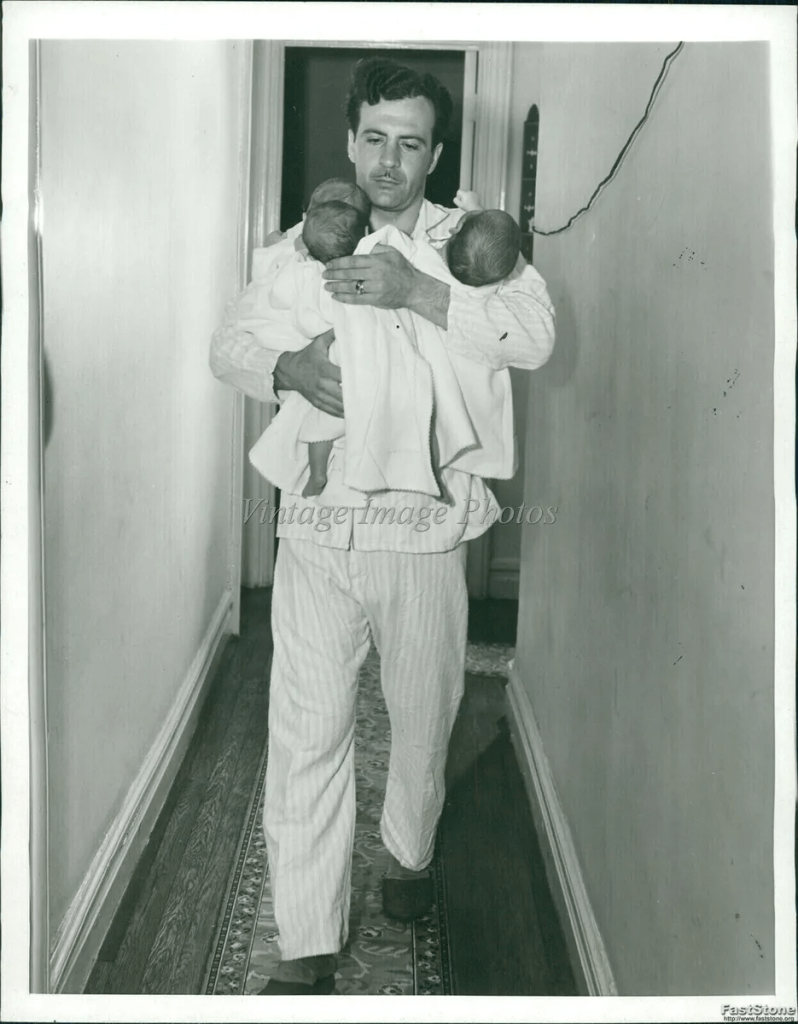

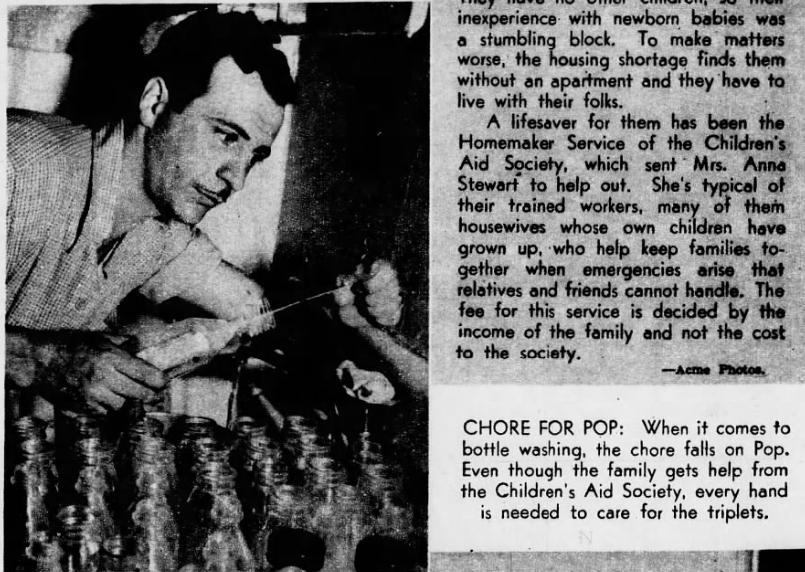


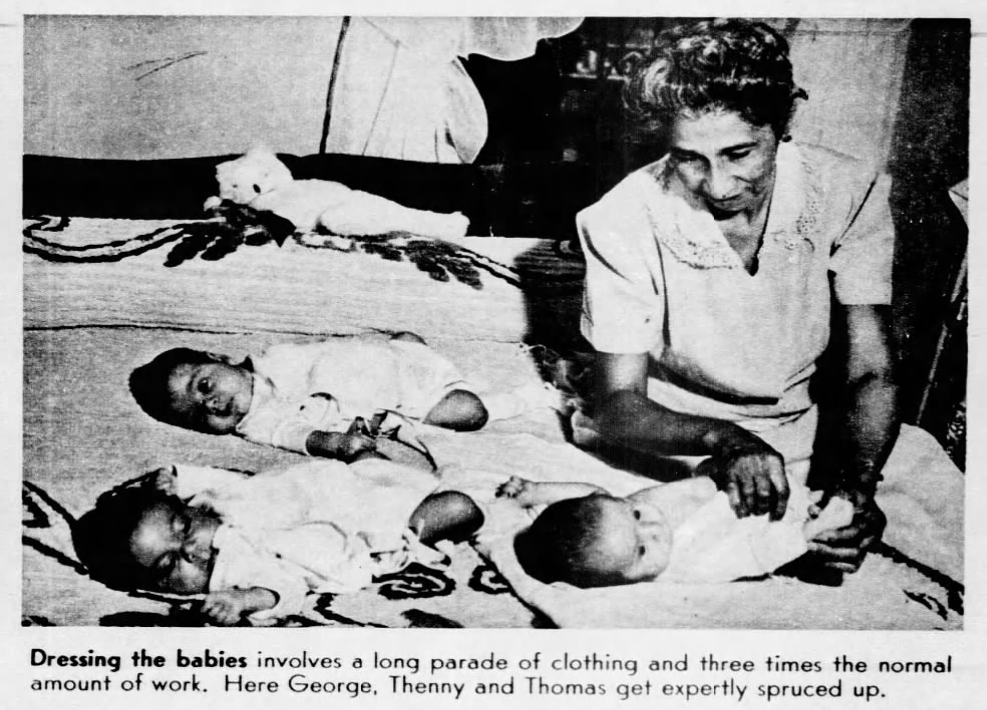

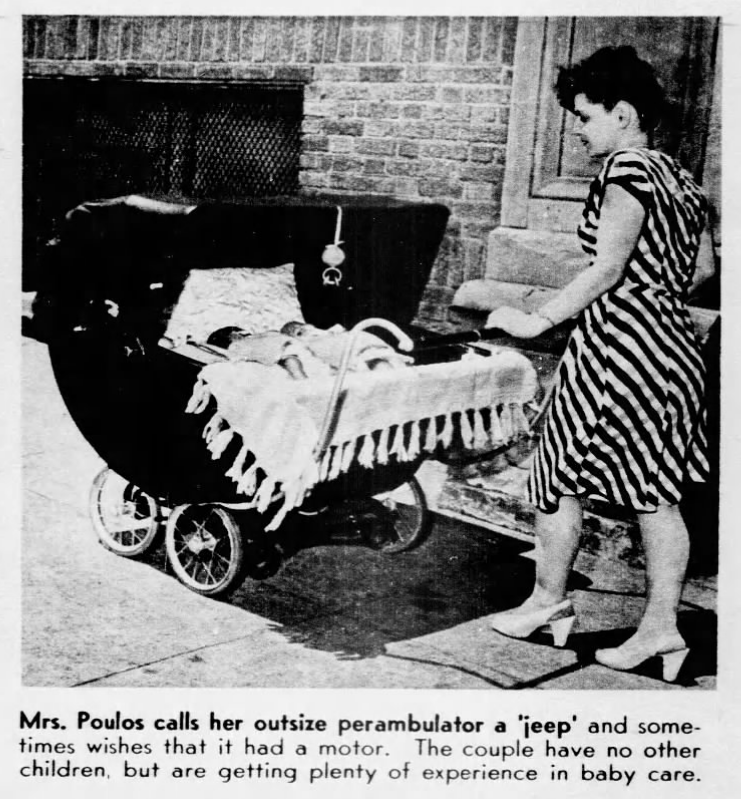
Three Generations
To make the situation more complicated, due to a housing shortage the couple and all three babies moved in with their parents (I couldn’t find whose) apartment. Arris was an active care provider, scrubbing bottles and walking the floor with all three babies in arms. Nora got a massive buggy to hold all three babies together, she called it her ‘jeep’. I can’t imagine having to haul that thing over steps but they figured it out. At least by the time the twins turned five they were living at 165 Nagel Ave, which is still there today:

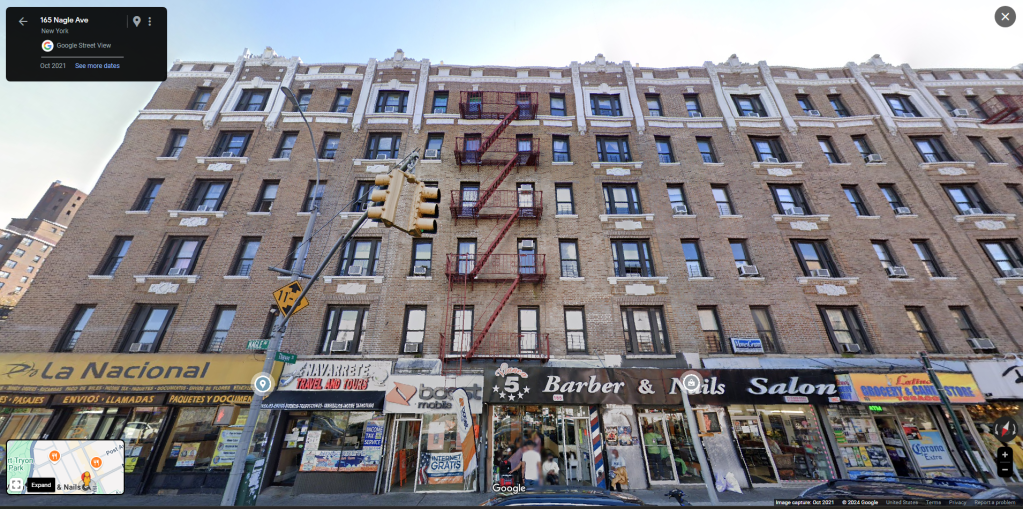
Fame
The family became international news with that famous nursery window photo and newspapers as far afield as Australia’s Sydney Sun did articles about them. Press releases documented their second birthday and through out their childhoods, the family was featured in articles about raising multiples. For their fifth birthday, the New York Times did a piece about the Children’s Aid Society hosting a birthday party for them, inviting three other sets of triplets to join in.




Hope & Grace
At some point, Nora and Arris welcomed another baby to the family, a daughter named Hope. I imagine the name was inspired by “I hope its not triplets again.” But seriously, this family seems to have managed the challenge of first time parenting plus triplets plus fame with a lot of grace.


Epilogue
As ever, when I do a story about babies who have since grown up, I like to learn what I can about their lives:
Arris, who was born in Greece, September 31, 1918, immigrated to the US with his parents and siblings and was counted in the 1940 census in New York, living with them. In 1943, he enlisted in the Army, becoming part of a reconnaissance Battalion, an OSS operational group which fought the Nazis in Greece. I tried to find information about when he and Nora were married but I couldn’t. But obviously, we know they got married and started a family. As far as I could tell, they remained together until his death Dec 15, 1994, he was interred in the Santa Fe National Cemetery (for veterans).
George served in the Navy, refueling jets on the flight deck of USS America in the 1960s. Sadly he developed multiple sclerosis but his family said he managed its challenges bravely and worked to bring awareness to the condition through the Multiple Sclerosis Society. At some point he moved to Santa Fe, which was also where his mother Nora lived. I couldn’t find evidence but I wonder if she lived with him and helped care for him. He died July 7, 2012 and was survived by his son Joseph.
Thomas, who was the oldest of the triplets, lived in St James, New York and married his childhood sweetheart Carol. They had four kids during their fifty-two year marriage. His family wrote that he was a “pioneer of the mobile catering industry,” passing down a very successful business to his family. He was a LI Ducks fan and an avid veggie gardener too. He died on August 3, 2016.

Nora (nee Stavros) was born Dec 5 1921, I tried to find some more information about her life but I failed. But she lived a very long life and was close with her family, which included ten grandkids, plus great and great-great grandkids by the time of her death on February 19, 2017. She was buried, I believed by Arris, also in Santa Fe National Cemetery. Its likely because she was married to Arris, a veteran, but there’s a possibility she was buried there on her own merit. She may have been a veteran too, but I couldn’t find information about that. In lieu of flowers at her funeral, she requested donations to the MS Society.
As far as I could find, Thenny is still alive and I wish him and his whole family the very best.
*The hospital was a bit more difficult to find, I couldn’t find it listed on maps of the time period, though a very large Presbyterian hospital with a specific “babies hospital” was listed. But I found it in the end, including a photo of the building today. The hospital was absorbed by a larger network of hospitals in 1956, and later converted to apartments. Today on the ground floor there’s a Boys’ and Girls’ Club.



Sources
Newspaper Archive. (through public library access)
- (there were many more articles in other papers, but they had similar pieces. I used these.)
- Norwich Sun 25 April 1946Wilmington Morning Star 25 April 1946
- Denton Record Chronicle 25 April 1946 pg 7
- Philadelphia Inquirer 28 July 1946
- Sydney Sun 27 Oct 1946
- Long Beach Independent May 3 1948
- Delta Millard County Chronicle 5 Aug 1948
Newspapers.com (free trial access)
- Cincinnati Enquirer 28 July 1946
Archive.org
Times Machine (through public library access)
- New York Times 20 April 1951 pg 17 “A PARTY FOR FOUR SETS OF TRIPLETS”
Wikipedia
1940s NYC interactive map (by Julian Boilen)
